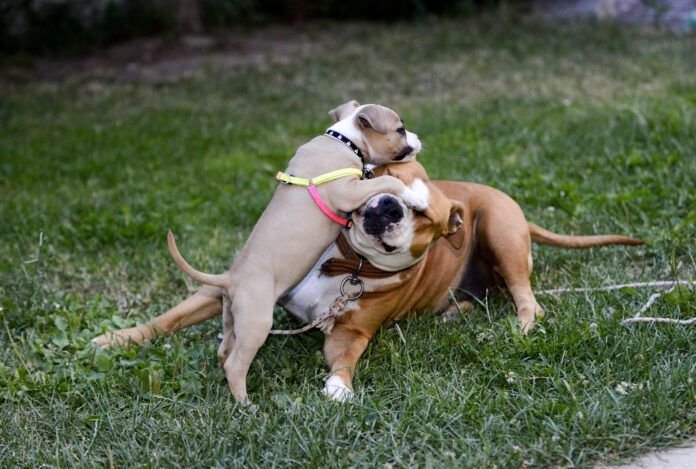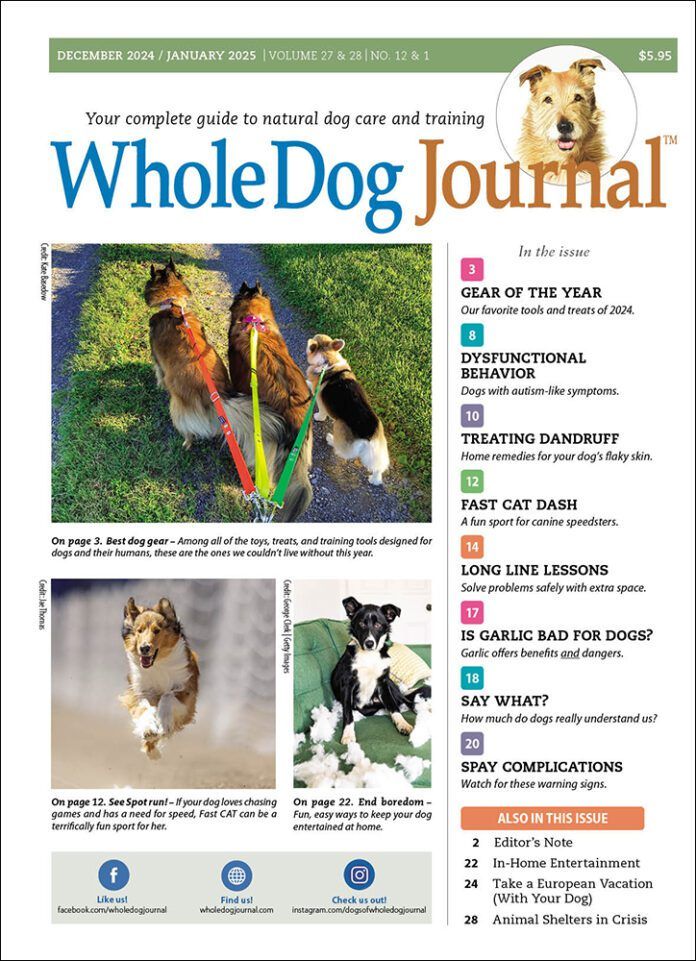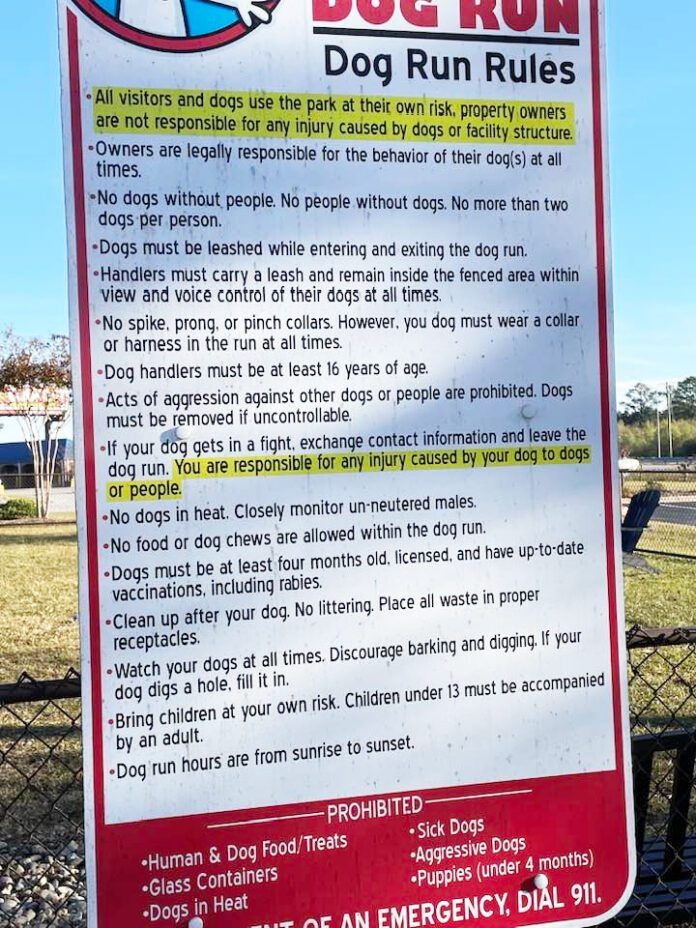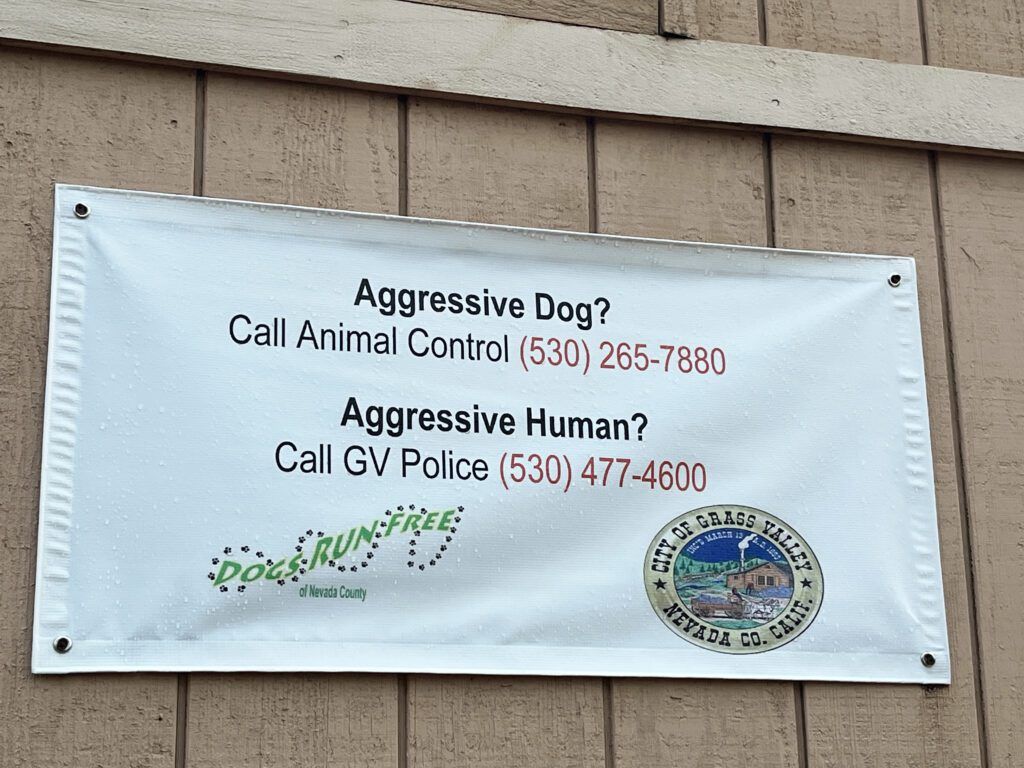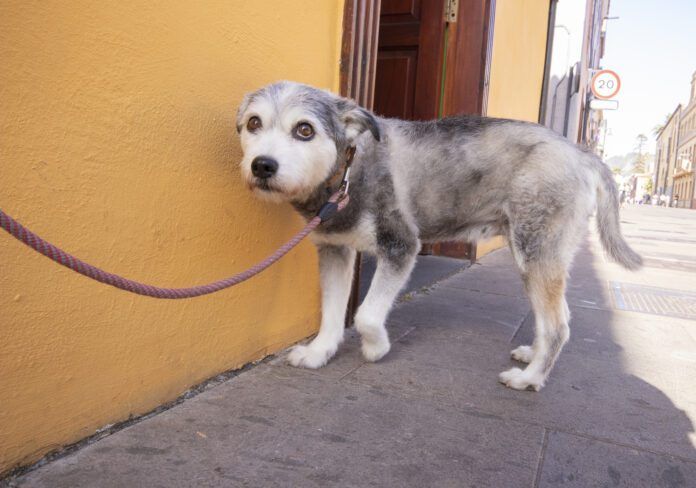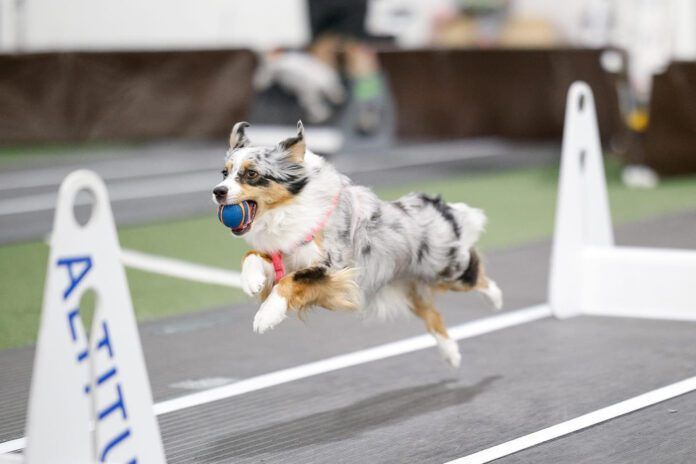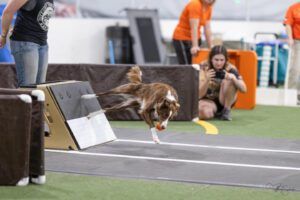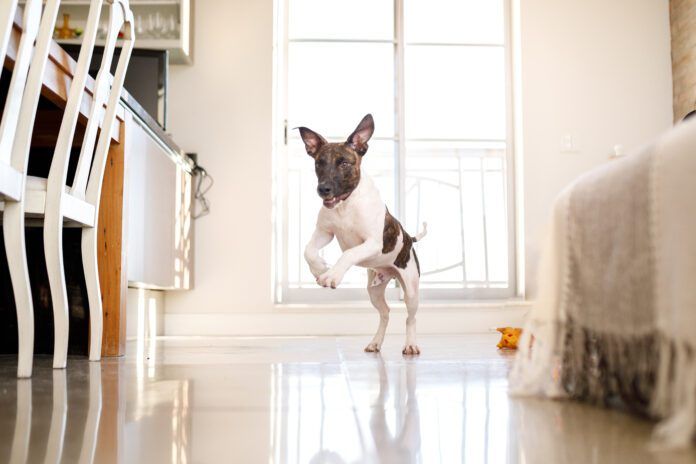Every one of us who has lived with and loved a dog knows the pain of grief when we lose them. But what about the other dogs in our home? Do they grieve the loss as well?
Answering this question isn’t as simple as it sounds. Of course! you may say, explaining how you’ve seen it for yourself when you’ve lost one dog and another was left behind. Or you might be someone who rolls your eyes at the idea that dogs—or any beings other than humans—are capable of such a complex emotion as grief. Even scholars are divided: some insist that most animals have emotions; others argue that emotions are uniquely human; and still others fall somewhere between the two positions.[i]
How Do You Help a Dog Cope with the Loss of Another Dog?
There is no set timeline for how long your dog will grieve the loss of a close companion. As with humans who are grieving, you may find that some days your dog seems to be handling it well while other days she struggles. However, there are some things you can do to help your dog cope with grief:
- Keep to an established routine. It can be difficult to maintain a routine after a loss, but keeping a consistent schedule can help a grieving dog feel safe.
- Make sure your dog is getting enough exercise. Getting up and moving—even if it’s just a short, gentle walk—can encourage a dog who is grieving to reengage with the world. It can also help reduce lethargy, stimulate appetite, and encourage normal sleep patterns.
- Spend time with your dog. One of the biggest things you can do to help a grieving dog is to spend time with her. This can be anything from sitting quietly in the same room with her to making time for extra play sessions. That said, don’t force it or overwhelm her with attention. If the dog leaves when you sit down next to her, it’s okay. Give her some space and try again later.
- Set up visits with friends. If your dog likes to socialize, extra playdates with dog friends may be just what she needs to help her through the grieving process. However, if your dog avoids interacting, shows signs of anxiety, or acts grumpy or aggressive towards other dogs, stop the playdate right away and try something else instead.
- Training can help. Spending some time each day on training can help engage a grieving dog’s mind. It doesn’t have to be anything difficult. Celebrate small successes, even if the dog’s performance isn’t as sharp as usual. If your dog seems up for it, add in some new tricks, games, or activities.
It’s important to remember that there is no way to force your dog through the grieving process. Pay attention to what your dog is telling you about what they need. If you’re out of ideas or are concerned for your dog’s well-being, don’t hesitate to reach out to a vet or behaviorist for advice. – Kate O’Connor
Historical Perspectives On Animal Emotions
For most of the last two thousand years, while the lay public wholeheartedly believed that animals had emotions, the majority of Western philosophers scoffed at the idea, insisting that animals have nothing more than instincts that require no conscious thought. Charles Darwin strongly differed with this approach, arguing that emotions are found not just in humans, but across all species.[ii] This was in keeping with the Enlightenment of the 17th and 18th centuries, when philosophers began to put forth the idea that animals possessed reason and could suffer.[iii] By the end of the 19th century, even the most unyielding scientists were accepting the concept of sentience, the capacity of humans and animals to experience feelings and awareness.
That belief was all but extinguished by the emergence of Behaviorism in the early 20th century. Its adherents insisted that science needed to put an end to using terms like sensation, perception, desire, and emotion, since they had no objective reality.[iv] For much of that century, Behaviorism reigned, along with the view that false science was responsible for the mistaken belief that animals had emotions.
Then came the mid-1980s when many scientists, spurred by discoveries from pioneering animal behaviorists, along with anecdotes from long-term field studies by researchers like Jane Goodall, developed a renewed interest in animal sentience and how animals feel.[v],[vi] That interest has continued to this day.
New Attitudes Toward Animal Grief
Which brings us back to the question of grief, and whether animals—dogs, specifically—are capable of feeling grief after the loss of another dog. Recent studies say yes, and that’s backed up by the experiences of countless dog caretakers. While not even the most astute scientist or animal behaviorist can know with absolute certainty what dogs know and feel about death and dying, researchers have come closer than ever before to being able to say with some degree of certainty that dogs do mourn the death of another dog in their household.
Anthropologist and author of How Animals Grieve, Dr. Barbara J. King, maintains that even though humans have a rational awareness of death and its finality, the ability to mourn doesn’t depend upon that understanding. “Our own ways of mourning may be unique,” she says, “but the human capacity to grieve deeply is something we share with other animals.”[vii]
What Studies Reveal About Grief in Dogs
To understand animal grief, researchers generally impose two preconditions: first, that the animals actively choose to spend time together; and second, when one animal dies, the survivor’s normal behaviors change, sometimes drastically, and sometimes to the point of death.[viii] In 2022, a team of Italian researchers completed a years-long study on these kinds of changes, and came to the conclusion that the emotional bonds dogs form with humans often extend to other animals in their household, and that the death of a companion dog can result in behaviors that would typically be identified as grief and mourning.
Among the dog caretakers in the study, 86 percent observed negative changes in the surviving dog’s behavior; more than a third said the changes lasted between two and six months, and a quarter reported that they lasted longer than six months.[ix] The study rejected the theory that the caretaker’s own grief was simply being reflected onto the surviving dog, and determined that the changes in the dog’s conduct were genuine. Interestingly, researchers also found that what mattered most in terms of the degree of grief was not how long the two dogs had lived together, but the strength of their bond.[x]
When one dog in the household dies, the surviving dog may not understand that the separation is permanent, but they clearly feel the loss…which we know by observing their behavior. In 1996, the ASPCA conducted the Companion Animal Mourning Project, which found that when a dog’s companion dies, two thirds of surviving dogs showed a number of behavioral shifts, including appetite loss, sleep disruption, lethargy, increased vocalizing, avoiding play, clinginess, disorientation, and in extreme cases, wasting away.[xi] Many of these behaviors are not unlike human mourning over the loss of a loved one.
The Nature of Grief in Dogs
Yet there remains a major problem hindering investigations into animal emotions: in the absence of a Vulcan mind probe, animal minds, just like the minds of our fellow human beings, are essentially private and unknowable, especially so because animals can’t tell us how they’re feeling. This adds fuel to the fire laid by old-school scientists who reject any theory that ventures into the territory of animal feelings. Renowned biologist and behavioral ecologist Marc Bekoff says that even if one day we discover that a dog’s brain activity is similar to a human’s when that person reports being happy or sorrowful, “some skeptics hold tightly to the view that it is impossible to know what animals are truly feeling, and that therefore these studies are fruitless.” He suggests that one reason for this intractable unwillingness to study animal emotions is because these researchers fear being labeled “soft” and “nonscientific.”[xii]
Bekoff and others believe that we need to consider not just empirical data, but also anecdotal evidence, like that provided by dog caretakers when they observe the apparently-grieving actions of their dogs after the loss of a companion dog. They argue that caretakers provide consistently reliable and accurate information about and interpretation of their animal’s behavior, evidence that simply wouldn’t be available to an outside observer in a laboratory setting.[xiii],[xiv],[xv]
“Even if joy and grief in dogs is not the same as joy and grief in chimpanzees, elephants, or humans, this does not mean that there is no such thing as dog joy or dog grief,” says Bekoff.[xvi] As heartbreaking as it is to see our beloved companions go through the painful process of grief, by recognizing that grief we can help them heal and cope—and perhaps ease our own grief as well.
In the end, we’re confronted with the question, What is the nature of grief? We may as well ask, What is the nature of love? since the two are so inextricably intertwined. As Barbara King reflects in How Animals Grieve, “What stands out…is not the hypotheses of human uniqueness, but the discovery that other animals do grieve, and that they grieve because they have loved.”[xvii]
[i] de Vere, Amber J. and Kuczaj, Stan A. II. “Where are we in the study of animal emotions?” Wiley Interdisciplinary Reviews: Cognitive Science. 2016. Accessed through ResearchGate. https://www.researchgate.net/profile/Amber-De-Vere/publication/ 304250629_Where_are_we_in_the_study_of_animal_emotions/links/5b2bc122a6fdcc8506b7118d/
[ii] Ekman, Paul. “Darwin’s contributions to our understanding of emotional expressions.” Philosophical Transactions of the Royal Society of London. Dec 12, 2009; 364(1535):3449–3451. Accessed through National Library of Medicine PubMed. https://pmc.ncbi.nlm.nih.gov/articles/PMC2781895/
[iii] Duncan, Ian J.H. “Animal Welfare: A Brief History.” La Fondation Driot Animal: Éthique & Sciences. (Proceedings: Animal Welfare: from Science to Law). https://www.fondation-droit-animal.org/proceedings-aw/animal-welfare-a-brief-history
[iv] Katsnelson, Alla. “How do we know what emotions animals feel?” Science News April 8, 2022 https://www.sciencenews.org/article/animal-emotion-behavior-welfare-feelings
[v] Duncan, Ian J.H. “The changing concept of animal sentience.” Applied Animal Behaviour Science Volume 100, Issues 1–2, October 2006. Accessed through Science Direct. https://www.sciencedirect.com/science/article/pii/S0168159106001110
[vi] Rowan, Andrew N., et al. “Animal sentience: history, science, and politics.” Animal Sentience 31(1). May 12, 2022. Accessed through WellBeing International. https://www.wellbeingintlstudiesrepository.org/cgi/viewcontent.cgi?article=1697&context=animsent
[vii] King, Barbara J. “Humans Are Not the Only Creatures Who Mourn.” Scientific American. Sept 1, 2015. https://www.scientificamerican.com/article/humans-are-not-the-only-creatures-who-mourn/
[viii] ibid
[ix] Coren, Stanley, Ph.D. “Do Dogs Grieve the Loss of a Canine Housemate?” Psychology Today. March 1, 2022. Reporting on study noted in endnote 10.
[x] Uccheddu, Stefania; Ronconi, Lucia, et al. “Domestic dogs (Canis familiaris) grieve over the loss of a conspecific.” Scientific Reports 12, article number 1920. February 24, 2022. Accessed through Nature. https://www.nature.com/articles/s41598-022-05669-y#citeas
[xi] Hunter, Tammy, DVM; Llera, Ryan, BSc, DVM; Buzhardt, Lynn, DVM. “Do Dogs Mourn?” VCA Animal Hospitals. No date. https://vcahospitals.com/know-your-pet/do-dogs-mourn
[xii] Bekoff, Mark. “Animal Emotions: Exploring Passionate Natures: Current interdisciplinary research provides compelling evidence that many animals experience such emotions as joy, fear, love, despair, and grief—we are not alone.” BioScience, Volume 50, Issue 10. October 2000.Accessed through Oxford Academic Journals. https://academic.oup.com/bioscience/article/50/10/861/233998
[xiii] Martens, Pimm; Enders-Slegers, Marie-José; and Walker, Jessica K. “The Emotional Lives of Companion Animals: Attachment and Subjective Claims by Owners of Cats and Dogs.” Anthrozoös, 29(1). 2016. Accessed through Taylor & Francis Online https://www.tandfonline.com/doi/epdf/10.1080/08927936.2015.1075299?needAccess=true
[xiv] Loc sit Bekoff, Mark.
[xv] Panksepp, Jaak. “Affective Neuroscience: The Foundations of Human and Animal Emotions.” ISBN 978-0-195-17805-0. Oxford University Press. September, 2004.
[xvi] Loc sit Bekoff, Mark.
[xvii] King, Barbara J., Ph.D. How Animals Grieve. ISBN 978-0-226-43732-2. Oxford University Press. April 17, 2014.




